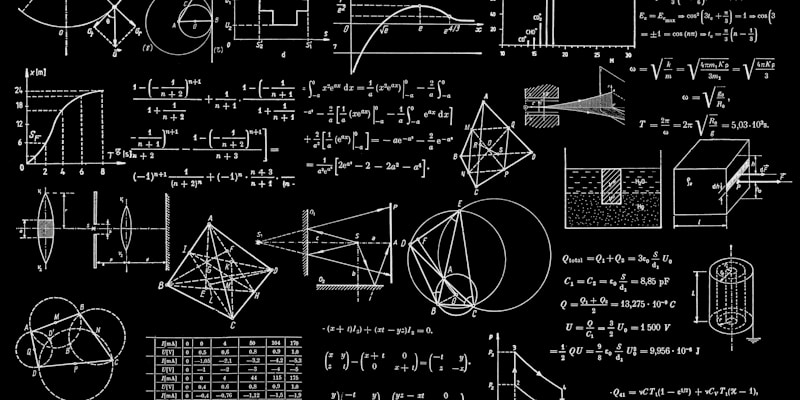Scientists Compute Injective Norm of CSS Quantum Error-correcting Codes, Revealing Connections to Matroid Theory

Summarize this article with:
Quantum error correction relies on creating entanglement between qubits to protect information, but quantifying this entanglement presents a significant challenge. Stephane Dartois from Ecole Polytechnique and Gilles Zémor from the Institut de Mathématiques de Bordeaux now calculate the injective norm, a measure of genuine multipartite entanglement, for a broad class of quantum error-correcting codes known as CSS codes. This achievement extends previous work focused on specific codes, such as the Kitaev code, and importantly, provides an exact solution for an infinite family of quantum states.
The team’s calculations not only advance our understanding of entanglement in quantum systems, but also reveal a surprising link between quantum information theory and the mathematical field of matroid theory, specifically through Edmonds’ intersection theorem. Computing this measure is generally a computationally challenging task, yet scientists have exactly computed it for specific codes in condensed matter theory, notably the Kitaev code and its extensions.
This research extends these results to all CSS codes, thereby establishing the injective norm for a nontrivial, infinite family of quantum states. In doing so, the work uncovers an interesting connection to matroid theory and Edmonds’ intersection theorem. Entanglement, Error Correction and Tensor Networks This body of research explores the interconnected fields of quantum error correction, entanglement measures, and tensor networks. A significant portion of the work focuses on quantum error-correcting codes, including surface codes and topological codes, with a clear interest in identifying and understanding their capabilities. Scientists also investigate robust and meaningful ways to characterize entanglement in quantum states, employing geometric measures to quantify this crucial property. Tensor networks are increasingly used as a tool for representing and simulating quantum states, particularly in complex many-body systems. This approach aids in understanding entanglement structure and finding efficient representations of quantum states. Investigations into the properties of random tensors, their decomposition, and their applications in various fields also feature prominently. The research leverages mathematical structures, such as matroids, to better understand the properties of quantum states and codes. Connections to spin glasses and disordered systems are also explored, alongside investigations into topological phases of matter and their relationship to quantum error correction. Recent work examines the connection between low-density parity-check (LDPC) codes and stable phases of quantum matter. Potential research directions include combining tensor networks with quantum error correction, applying geometric measures of entanglement to characterize protected entanglement, and utilizing matroid theory to discover new and improved codes.
Injective Norm Calculation for CSS Codes Scientists have precisely calculated the injective norm, a measure of multipartite entanglement, for a broad family of quantum states derived from classical error-correcting codes. This achievement addresses a notoriously difficult problem, as computing the injective norm is generally considered computationally intractable.
The team successfully extended existing results, previously limited to specific codes like the Kitaev code, to encompass all CSS codes, thereby establishing the injective norm for an infinite family of quantum states. The research centers on calculating the geometric entanglement of quantum states associated with classical linear codes. Given a k-dimensional linear code, scientists determined that the injective norm of the corresponding quantum state is equal to 2 raised to the power of negative one half, multiplied by (k minus j(C)). Here, j(C) represents the smallest integer defining the dimension of a ‘punctured’ code, a subcode created by removing coordinates, and is crucial for characterizing the entanglement properties. Experiments revealed a direct link between the injective norm and the dimensions of these ‘punctured’ codes.
The team demonstrated that the injective norm is entirely dictated by the smallest integer j(C), which defines how the code’s dimension changes when specific coordinates are removed. This breakthrough delivers a precise mathematical formula for calculating geometric entanglement, bypassing the computational complexity typically associated with this measure. The results show that the injective norm can be calculated by determining the smallest integer j(C) for a given code, and applying this value to a simple equation. This achievement not only advances the understanding of multipartite entanglement but also provides a powerful tool for analyzing quantum states arising in quantum error correction and potentially other areas of physics.
The team proved matching upper and lower bounds on the injective norm, confirming the accuracy of their formula and establishing a firm theoretical foundation for future investigations. Injective Norm and Matroid Theory Connection This research successfully computes the injective norm, a measure of multipartite entanglement, for a broad family of quantum error-correcting codes known as CSS codes. Calculating this norm is generally a computationally difficult problem, but the team extended previous work on specific codes, such as the Kitaev code, to encompass all CSS codes. This achievement provides an exact determination of entanglement for an infinite family of quantum states, representing a significant advance in understanding multipartite entanglement. The work also reveals a surprising connection between the injective norm and matroid theory, a branch of mathematics dealing with combinatorial structures. Specifically, the calculation relies on a result from matroid theory known as Edmonds’ intersection theorem, demonstrating an unexpected interplay between quantum information and abstract mathematical concepts. While the authors acknowledge that the computational complexity remains high for certain code parameters, this research establishes a powerful framework for quantifying entanglement in a wide range of quantum systems. Future work may focus on exploring the implications of this connection to matroid theory and extending these calculations to even more complex quantum states. 👉 More information 🗞 The injective norm of CSS quantum error-correcting codes 🧠 ArXiv: https://arxiv.org/abs/2510.23736 Tags:
